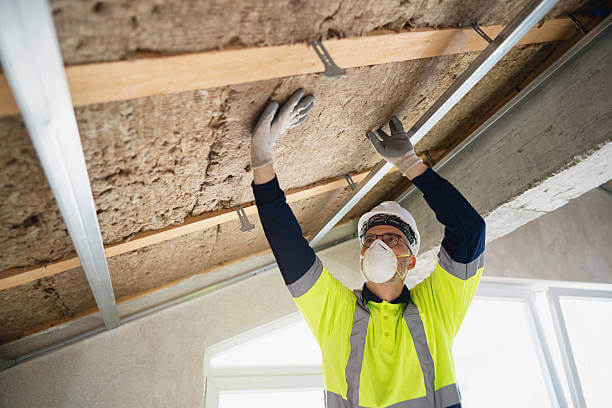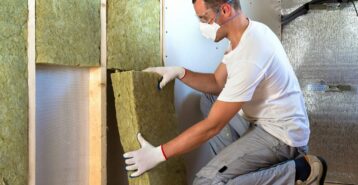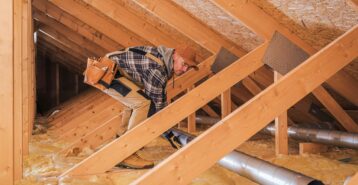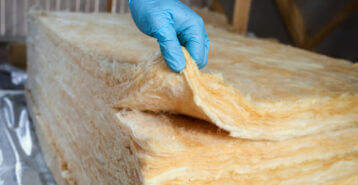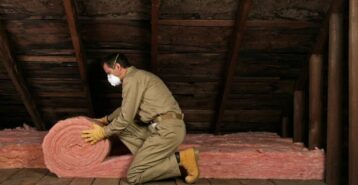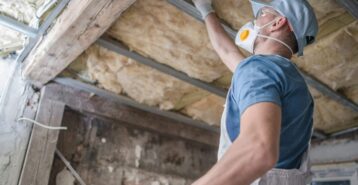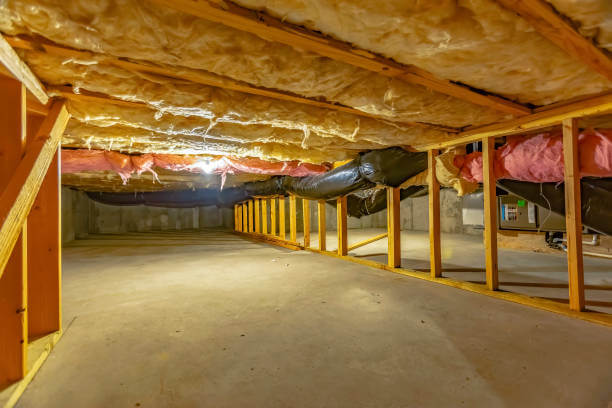What Is Roof Insulation?
Roof insulation is a protective barrier installed in your attic or roof cavity that slows heat transfer between your home’s interior and the outside environment. It helps retain heat during winter and block it during summer, creating a more consistent and comfortable living space.
The insulation in your roof is an important component of your home — one that ensures better energy efficiency, lower utility bills, and greater personal comfort. Roof insulation comes in many forms, but all serve the same purpose: keeping your home more comfortable by managing heat gain and loss throughout the year.
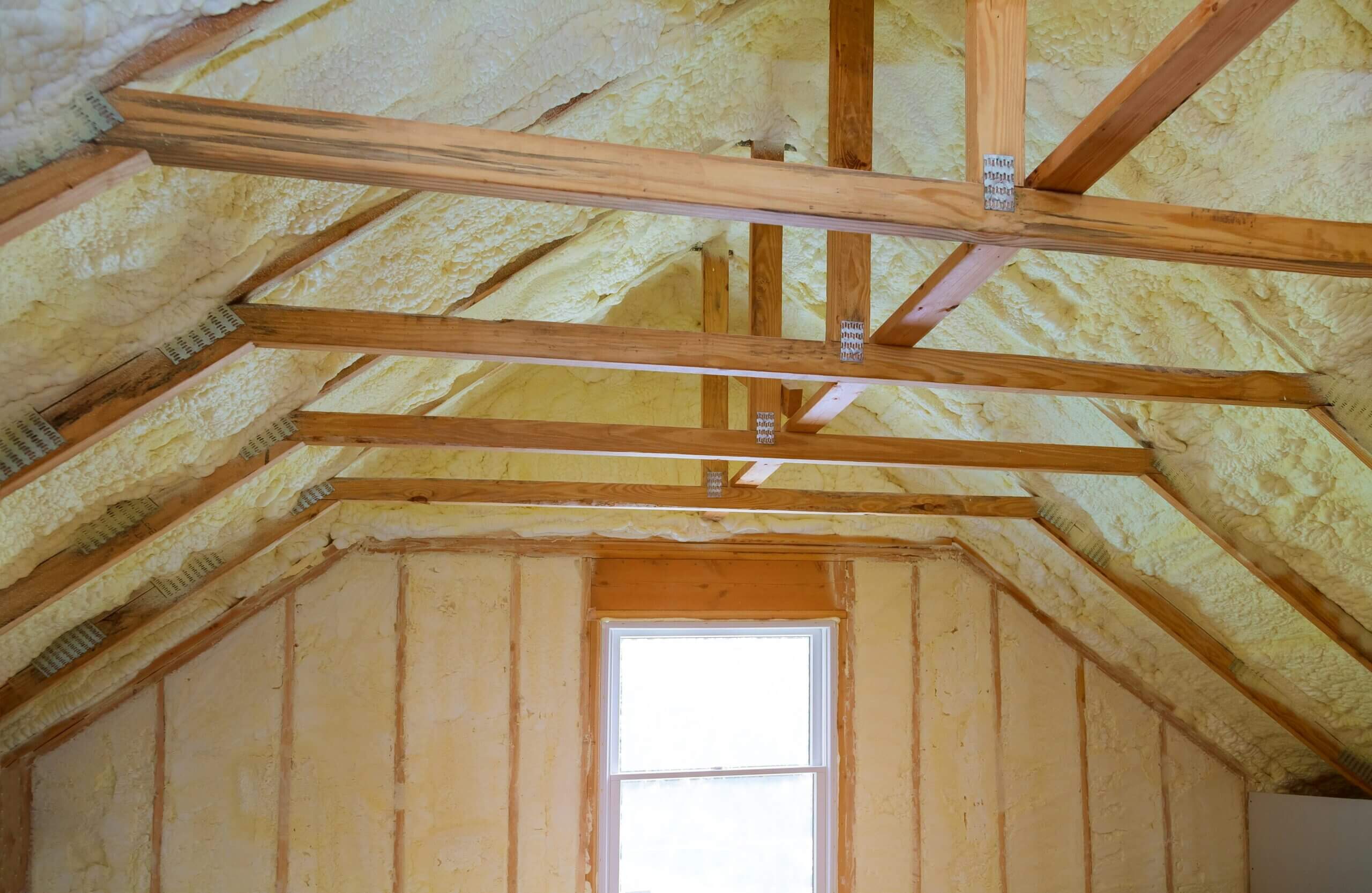
How Does Roof Insulation Work?
Roof insulation works by acting as a thermal barrier in your attic. It prevents unwanted hot or cold air from penetrating your home, keeping indoor temperatures stable and reducing the workload on your HVAC system.
How well your insulation performs depends on several factors, including:
- The installation quality and coverage
- The age and condition of your insulation
- The R-value, or how well the material resists heat flow
Understanding R-Value
The R-value measures how well insulation resists the flow of heat — the higher the R-value, the better the performance. R-values are measured per inch of insulation.
For example:
- An R-value of 40 means one inch of that insulation resists as much heat flow as 40 inches of air.
- Two inches of that material doubles the value to R-80.
The R-value you need depends on your location and climate. Colder climates require higher R-values, while warmer areas can use lower ones. The recommended R-value can also vary depending on the area of your home — your attic typically needs higher R-values than walls or crawl spaces.
Do You Need Roof Insulation?
If your home is less than 15 years old, your insulation is likely in good shape. However, certain warning signs may indicate it’s time to replace or upgrade your roof insulation.
Look for these signs of insufficient or failing insulation:
- Code Violations: Your current insulation doesn’t meet the minimum R-value required by local building codes.
- Higher Energy Bills: Rising energy costs without changes in household usage suggest your insulation is underperforming.
- Unexplained Drafts: An attic that’s extremely hot in summer or freezing in winter indicates poor insulation.
- Uneven Temperatures: Rooms on upper floors feel less comfortable than those below.
- Signs of Water Damage: Roof leaks can saturate insulation, leading to mold or trapped moisture.
- Potential Damage: Frozen pipes, icicles on gutters, or ice dams in winter signal inadequate insulation.
- Pest Infestation: Rodents or insects nesting in insulation contaminate materials and require replacement.
If you notice any of these issues, upgrading your insulation can improve energy efficiency and prevent further damage.
How Much Does Roof Insulation Cost?
The national average cost for roof insulation ranges between $1,000 and $4,000, with most homeowners spending $2,200 to $3,000 to insulate a 1,000-square-foot attic.
The total price depends on factors like insulation type, R-value, installation method, and whether you hire a professional or do it yourself.
Average Roof Insulation Costs by Type
| Insulation Type | Average Cost |
|---|---|
| Fiberglass Batt or Roll | $1,000 to $2,500 |
| Spray Foam | $2,000 to $4,000 |
| Cellulose | $1,500 to $3,000 |
| Rock Wool | $2,000 to $3,500 |
| Rigid Foam Board | $1,000 to $3,000 |
| Reflective or Radiant Barriers | $700 to $2,800 |
If you choose to do the job yourself, expect to pay around $500 for supplies plus anywhere from $0.25 to $7.00 per square foot for materials, depending on the insulation type and R-value.
Hiring a professional typically costs more but provides faster, safer installation and ensures full coverage in difficult-to-reach areas.
Factors That Affect Roof Insulation Costs
Several factors can influence your total cost:
- Size of the Area: Larger attics require more material and labor.
- Type of Insulation: Spray foam and rock wool cost more than fiberglass rolls.
- Geographic Location: Labor rates, material availability, and climate demands influence cost.
- Disposal Fees: Removing old insulation can add disposal expenses.
- Additional Services: Repairs, pest control, or mold remediation may increase total cost.
- Rebates and Grants: You may qualify for rebates or energy-efficiency incentives.
- Insurance Reimbursement: If insulation replacement is due to covered roof damage, insurance may help pay for it.
Benefits of Roof Insulation
Installing or upgrading roof insulation provides a range of benefits for your comfort, energy savings, and home protection. Key advantages include:
- Energy Efficiency: Better insulation reduces heat transfer, lowering energy use and utility bills.
- Comfort: A well-insulated roof prevents temperature swings, improving year-round comfort.
- Noise Reduction: Insulation helps dampen noise from rain, hail, or outside traffic.
- Environmental Benefits: Lower energy consumption means reduced greenhouse gas emissions.
- Moisture and Condensation Control: Helps prevent attic moisture buildup and mold.
- Extended Roof Lifespan: Reduces ice dam formation and temperature stress on roofing materials.
Compare roof insulation quotes from top pros near you.
Considerations and Limitations
While roof insulation offers many benefits, it’s not a one-size-fits-all solution. Consider the following before installation:
- Upfront Cost: High-quality materials like spray foam have greater initial expenses.
- Installation Challenges: Rigid foam boards and other types can be difficult to install in tight spaces.
- Roof Material Compatibility: Certain insulation types may not suit metal, slate, or flat roofs.
- Code and Regulation Limits: Local energy efficiency or building codes can restrict certain insulation options.
- Special Cases: Historic homes or damaged roofs may need structural repair before new insulation can be added.
Best Roof Insulation Materials
The best insulation for your roof depends on climate, cost, R-value needs, and installation preferences. Here’s a detailed look at each major option:
Fiberglass Roof Insulation
Fiberglass insulation — available in batts or rolls — is the most common type in U.S. homes. It traps pockets of air, providing effective thermal resistance and helping control temperature.
- R-Value: 3.14 to 4.3
- Pros: Inexpensive, widely available, DIY-friendly
- Cons: Can release fibers; requires protective gear during installation
Spray Foam Roof Insulation
Spray foam expands to fill gaps, creating an airtight seal that’s excellent for soundproofing and energy efficiency. It’s available in low, medium, and high densities; medium density is typically used in attics.
- R-Value: 3.6 to 5.7
- Pros: Superior air seal, flexible, long-lasting
- Cons: Costly, may absorb water if leaks occur, requires professional installation
Rigid Foam Board Insulation
Rigid foam boards consist of compressed materials, often with fiberglass facings. They offer high resistance to heat transfer and are durable against moisture and fire.
- R-Value: 5.0 to 5.6
- Pros: High insulation value, mold and fire resistant
- Cons: Not suited for cold climates below 50°F, can attract pests
Reflective or Radiant Barriers
Made from aluminum foil or similar reflective materials, radiant barriers reflect heat away from the home instead of absorbing it.
- R-Value: 3.0 to 6.0
- Pros: Excellent for hot climates, lightweight, long-lasting
- Cons: Less effective in cold climates, not ideal for DIY installation
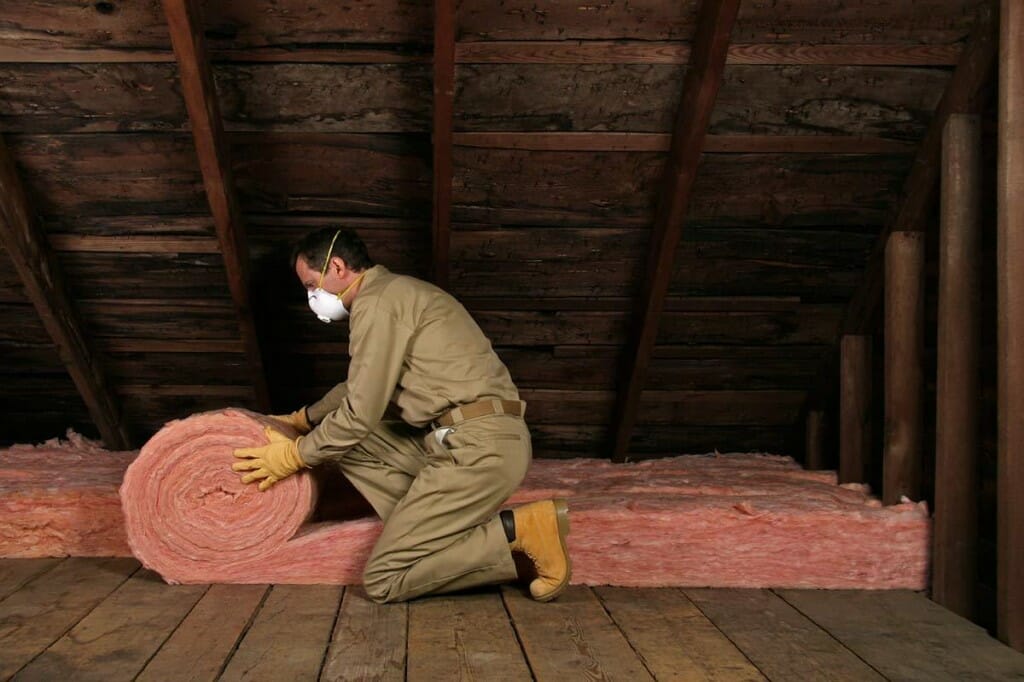 How to Choose the Best Roof Insulation for Your Home
How to Choose the Best Roof Insulation for Your Home
Selecting the right insulation involves understanding both your roof’s structure and your energy needs. Consider these factors when deciding:
- Check Roof Structure: Pitched roofs differ from flat or cathedral designs.
- Prioritize Energy Efficiency: Higher R-values offer long-term savings.
- Address Moisture Concerns: Choose moisture-resistant options in humid climates.
- Review Fire Safety Ratings: Fire-retardant materials are crucial in wildfire-prone areas.
- Think About Installation: Batts and rolls suit DIYers; spray foam and cellulose require professionals.
- Check Building Codes: Ensure compliance with regional regulations.
- Consult a Professional: A roofing contractor can help you balance cost, performance, and suitability.
Installation Process for Roof Insulation
Preparing for insulation installation involves a few important steps before the actual work begins.
Preparation Includes
- Clearing attic space for easy movement
- Checking that ventilation is adequate
- Sealing visible gaps or air leaks
General Installation Steps
- Assess and measure your roof or attic area.
- Select insulation material and thickness based on climate and code.
- Cut insulation to fit precisely between joists and beams.
- Install insulation using fasteners, adhesives, or spray equipment.
- Seal joints and gaps for maximum energy efficiency.
DIY installation works well for accessible attics using rolls or batts. However, materials like spray foam or blown-in cellulose require specialized equipment and should be installed by a professional.
Depending on the project’s complexity, professional installation may take a few hours to a couple of days.
Maintenance Tips
Maintaining roof insulation is simple but essential for long-term performance. Inspect your insulation at least once a year and look for these warning signs:
- Damp or discolored insulation (indicating leaks or condensation)
- Mold or mildew growth
- Evidence of pests or rodents
- Sagging or compressed sections
Beyond visual inspection, little maintenance is required. Keep your attic well-ventilated and monitor for roof leaks. If you find damage, replace affected insulation promptly to prevent efficiency loss.
Bottom Line: Is Roof Insulation Worth It?
Roof insulation is a smart long-term investment that improves comfort, cuts energy costs, and protects your home year after year. Choose your insulation based on climate, roof structure, and budget. While some materials suit DIY projects, others require professional expertise. Once installed, roof insulation delivers reliable performance with minimal maintenance — making it one of the most valuable upgrades for your home’s efficiency.
Request no-obligation estimates from insulation pros near you.
